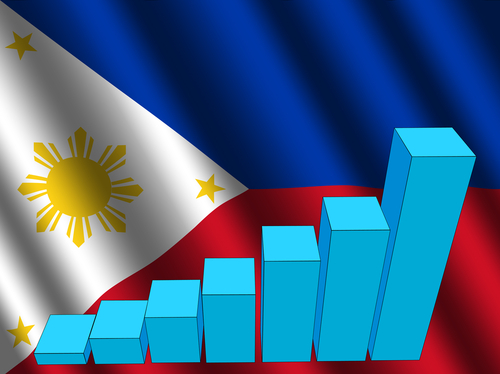Business and Economy
Analysts see higher year end economic growth
MANILA — The higher-than-expected 6.9 percent output of the Philippine economy in the third quarter of 2017, which is still among the highest in Asia, made some analysts consider an increase, while some even hiked, their full year growth projection.
Market consensus is 6.6 percent while average growth in the first three quarters this year is 6.7 percent, within the government’s 6.5 to 7.5 percent growth target for the year.
In a research note, ANZ economists Eugenia F. Victorino and Khoon Goh cited the unexpected upward revision of the second quarter output, from 6.5 percent to 6.7 percent, as a contributor to the positive report.
It, however, said that “net exports provided an offset to the moderation in domestic demand.”
Data released by the National Economic and Development Authority (NEDA) showed that household expenditure rose by 4.5 percent, slower than the 7.2 percent growth same period last year.
Also, real estate, renting, and other business activities (RERBA) registered a slower growth in the third quarter this year at 7.7 percent from year-ago’s 8.9 percent.
Total exports of goods, meanwhile, rose by 17.7 percent during the quarter from year-ago’s 8.1 percent.
The research note said growth of the real estate “was undeterred, making us increasingly cautious about the quality of over-all growth.”
It, however, pointed out that “high frequency indicators suggest that growth momentum could continue to pick up in Q4.”
Thus, ANZ said its current 6.5 percent output forecast for the year “is looking a bit light.”
ING Bank Manila senior economist Joey Cuyegkeng, in a research note, upped his full-year growth projection for the domestic economy from 6.6 percent to 6.7 percent but kept his 6.7 percent forecast for the fourth quarter alone.
He said growth of the service sector at 7.1 percent is unexpected, noting that ING Bank’s projection is only at 6.6 percent rise.
However, slowdown of household spending to 4.
5 percent from 5.8 percent in the first six months this year is a “disappointment”, he said.
“Rising prices together with some disappointments with OFW remittances for September have likely contributed to the softer growth,” Cuyegkeng said.
Bangko Sentral ng Pilipinas (BSP) data showed that total inflows from Overseas Filipino Workers (OFWs) contracted by seven percent last September to USD2.44 billion from year-ago’s USD2.626 billion.
In the first nine months this year, total remitances rose 4.8 percent to USD23.164 billion from year-ago’s USD22.108 billion.
DBS Group Research, in a study, also revised upwards its growth projection for the Philippines this year to 6.7 percent from 6.4 percent after the release of the third quarter GDP report.
It, however, maintained its 2018 and 2019 projections at 6.7 percent, noting that the upside surprise in the third quarter ouput “was mainly technical.”
On the other hand, the study said normalization of the domestic economy was sustained despite the high-base effects last year due to election spending.
Citing government data, DBS Group Research said investment grew by 6.6 percent in the third quarter this year from year-ago’s 5.9 percent but private consumption slowed to 4.5 percent from 8.5 percent same period same period last year.
“Full year 2017 investment and private consumption growth are still likely to come in rather storng at around 9.5 percent and 5.5 percent, respectively, but well below last year’s 25 percent and seven percent,” it said.
“Going forward, we expect growth in investment and private consumption to remain at around nine percent and 5.5 percent, respectively once the high base effects from last year’s elections dissipate from Q4 onward,” it added. (PNA)






















